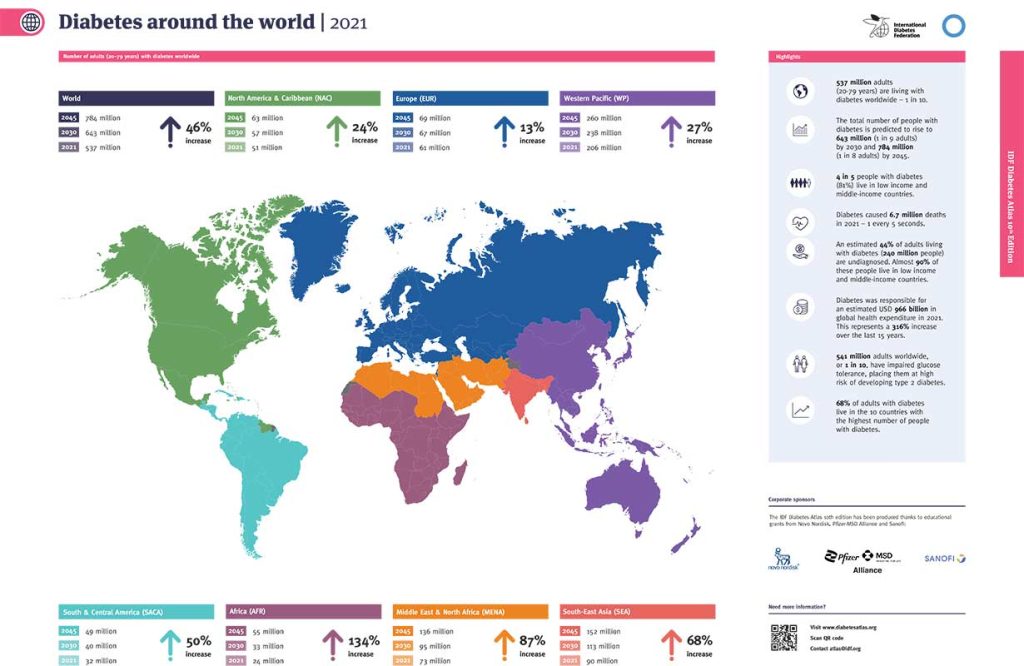Key Facts about Type-1 Diabetes:
- Type-1 Diabetes is an autoimmune disease that affects around 5-10% of people with diabetes. (1)
- It is typically diagnosed in children and young adults but can occur at any age. (2)
- Common symptoms include extreme thirst, unexplained weight loss, fatigue, frequent urination, and blurred vision. (3)
- People with Type-1 Diabetes require lifelong insulin therapy to survive. (4)
- Ongoing research aims to improve treatment options and find a cure for Type-1 Diabetes. (5)

The shocking reality of Type-1 Diabetes goes far beyond the simple notion of sugar intake. In fact, it is a complex autoimmune disease that affects millions of individuals worldwide.
In this article, we will unravel the hidden battles faced by those with Type-1 Diabetes, debunk common misconceptions, and shed light on the daily challenges they endure.
I. Understanding Type-1 Diabetes: The Silent Intruder
Type-1 Diabetes, often referred to as juvenile diabetes, is an autoimmune disease that stealthily infiltrates the lives of those affected.
Unlike Type-2 Diabetes, which is commonly associated with lifestyle factors, Type-1 Diabetes is not caused by poor diet or lack of exercise. Instead, it arises from an intricate interplay between genetics and the immune system’s unfortunate misstep.
In this section, we will go deeper into the mechanisms behind Type-1 Diabetes, shedding light on the immune system’s betrayal and the genetic factors that make certain individuals more susceptible to the condition.
I.1. Type-1 Diabetes and autoimmune response
The immune system is our body’s defense mechanism against foreign invaders, such as bacteria and viruses. In fact, its primary function is to identify and destroy these intruders to maintain our overall health.
However, in the case of Type-1 Diabetes, something goes awry within the immune system itself.
Within the pancreas, there reside specialized cells known as beta cells, which are responsible for producing insulin—a vital hormone that regulates blood sugar levels.
In individuals with Type-1 Diabetes, the immune system mistakenly identifies these beta cells as foreign entities and launches an attack. This assault is known as an autoimmune response.
The exact triggers for this autoimmune response are not yet fully understood, but researchers believe that both genetic and environmental factors play a role.
There is evidence to suggest that certain genes increase the risk of developing Type-1 Diabetes, although having these genes does not guarantee the development of the disease. Furthermore, it is believed that environmental factors, such as viral infections or exposure to certain chemicals, may act as triggers in genetically predisposed individuals.
The onset of Type-1 Diabetes can occurs at any age, although it is most commonly diagnosed in children and young adults.
In some cases, the disease may present itself with sudden and severe symptoms, requiring immediate medical attention.
However, it can also manifest more gradually, with symptoms that may initially be mistaken for other less serious conditions.
The silent nature of Type-1 Diabetes can be both a blessing and a curse. On one hand, its stealthy progression can make early detection challenging, leading to delayed diagnosis. On the other hand, early diagnosis offers a better chance of effectively managing the disease and minimizing potential complications.
I.2. Diagnostic approach
To diagnose Type-1 Diabetes, healthcare professionals rely on a combination of symptoms, blood tests, and monitoring blood sugar levels.
Symptoms such as excessive thirst, unexplained weight loss, persistent fatigue, frequent urination, and blurred vision are common red flags.
Blood tests that measure blood sugar levels and detect the presence of autoantibodies associated with Type-1 Diabetes are crucial for accurate diagnosis.
It is important to recognize that Type-1 Diabetes is not a result of personal choices or lifestyle habits. It is an unwelcome guest that arrives uninvited, disrupting the delicate balance of the body’s internal systems.
By deepening our understanding of the immune system’s betrayal and the genetic factors at play, we can foster empathy and dispel misconceptions surrounding this complex disease.
In the next section, we will explore the symptoms of Type-1 Diabetes in greater detail, providing valuable insights for early detection and prompt intervention.
